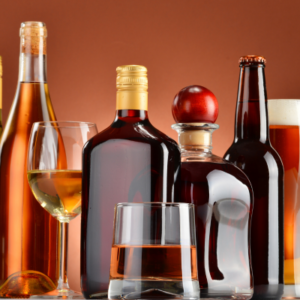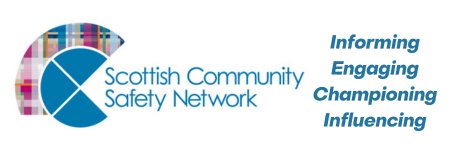 by David Barbour, SCSN Communications Officer
by David Barbour, SCSN Communications Officer
Last week it was announced that plans to continue setting a minimum price per unit of alcohol and to increase it by 15p will go before the Scottish Parliament for approval. As part of a ‘sunset clause’ when Minimum Unit Pricing (MUP) legislation was introduced in 2018, it will end on 30 April this year unless Parliament votes to keep it.
The Government says a price increase is required to counteract the effects of inflation and 65p has been selected to increase the positive effects of the policy.
The SCSN supported a rise in the Minimum Unit Price for alcohol to 65p in the recent Scottish Government consultation. We believe that MUP is part of a comprehensive range of interventions which must be delivered in order to help change Scotland’s relationship with alcohol.
Price controls are seen as an essential weapon in public health armoury by health experts across the globe, such as Professor David Nutt and Professor Sir Michael Marmot (who along with other experts from across the UK endorsed the Public Health Scotland evaluation of MUP) and are also fully endorsed by the World Health Organisation. The Scottish Government position on MUP was arrived at via intensive lobbying from these very third sector professionals, experts, scientists and doctors and via public consultation.
Minimum Unit Pricing is (and always was) targeted at ‘harmful/hazardous’ drinkers.
For the avoidance of doubt and confusion – The National Institute for Health and Care Excellence (NICE) defines ‘hazardous drinking’ as ‘a pattern of consumption that increases someone’s risk of harm’. This label may be applied to those with Alcohol Use Disorder Identification Toolkit (AUDIT) scores of between 8-15, or anyone regularly drinking more than 14 units of alcohol per week.
‘Harmful drinking’ means drinking in a way which is likely to cause harm – either physical or mental. Again, this is sometimes defined using AUDIT scores (usually 16 and above) or unit consumption (regularly drinking above the ‘hazardous’ level of 35 units a week for women or 50 for men).
MUP was introduced after a five-year battle with the alcohol industry which meant that the effectiveness of the 50p unit price was likely to be blunted from the start due to the impact of inflation. Rather a pleasing effect for an industry that may have a vested interest in the failure – or even the hint of a perception of not being successful – of a policy that might harm their profits. Especially when 68% of their sales revenue comes from those drinking over the safer unit guidance – or in other words, from harmful or hazardous drinkers.
We also know from Public Health Scotland and other research that the Covid pandemic had a major impact on drinking patterns. The Cost-of-Living Crisis and rampant inflation over the past few years will undoubtedly have created or exacerbated the stressful conditions where people may be likely to drink more alcohol and will also have blunted the impact of the original 50p MUP still further – meaning that despite the introduction of MUP, alcohol deaths have continued to rise.
Why is MUP important in a community safety context?
For public health or health professionals, the main goal of MUP will be reducing the burden of alcohol related liver disease, cancer (did you know that alcohol causes at least seven different types of cancer?), heart disease, stroke, dementia and other conditions.
Reducing harm to individuals however also includes reducing unintentional harm and injury or accidental deaths sustained by people who drink too much alcohol – especially in people who binge drink.
Alcohol is strongly implicated with house fires in Scotland, particularly if people also smoke or cook whilst drinking. It is also implicated in water safety and deaths by drowning in Scotland, with more drowning deaths occurring in Scotland on a Saturday night than any other night.
Drink driving remains a major issue in road safety in Scotland and the UK, with the number of drink drive deaths having doubled between 2010-2020.
However, alcohol does not only cause health harms to individuals, but also comes with extensive social harms. Indeed, this is why in his book ‘Drugs: Without the Hot Air’ – Professor David Nutt identified alcohol as THE most harmful of all drugs when social harms are combined with harms to the individual.
Alcohol remains strongly implicated in violent crime in Scotland and around the world, with 37% of offenders in 2021/22 thought to have been under the influence of alcohol by victims, though this has reduced substantially since 2009 (63%). 43% of the accused in homicides in Scotland in the ten years between 2010-2020 were under the influence of alcohol at the time of their offence. Alcohol is also strongly implicated in sexual crimes, both offenders being under the influence at the time, and victims being more vulnerable.
We know that alcohol is also strongly implicated in domestic violence, with a recent Swedish study showing that men with severe alcohol use disorders were six or seven times more likely to commit intimate partner violence.
So, it hardly needs stating that reducing alcohol harm and changing Scotland’s relationship with alcohol is a major area of concern for those working in both the community safety and home safety sectors.
It is for all of these reasons we strongly support setting MUP at a higher rate, supported a ban on alcohol advertising and strongly support the proposed alcohol levy to reinvest money into alcohol treatment and support. We would also support UK Government increases on alcohol duty at every budget – similar to those we see with tobacco products – and for these additional tax revenues to be reinvested in alcohol support and treatment services.
We recognise that evidence showing that MUP has had a major impact on the social elements of alcohol harm has yet to be fully realised and developed.
However, we would again point to the limitations of the MUP policy’s effectiveness in Scotland given the facts previously stated (that the 50p unit price which came into force in 2018 was set against prices in 2012 and thus less likely to be fully effective) and remind people of the role that the alcohol industry played in this subtle but perhaps somewhat effective undermining of the policy.
MUP was never going to be, nor was it ever sold as, a silver bullet for reducing alcohol harm or deaths in Scotland. A multi-faceted approach to changing Scotland’s relationship with alcohol is required, and MUP is an essential plank of this. Along with increasing the MUP for alcohol, we want to see a range of other health and social interventions to reduce alcohol harm in Scotland.
Some of these are within the gift of the Scottish Government, some lie with the UK Government, some a mix of both.
We want to see and strongly support:
- Continuation of MUP and regular uprating with inflation
- an alcohol advertising ban
- the introduction of the alcohol levy in Scotland
- increases in alcohol duty at UK Government budgets
- more investment in support and treatment
- Licensing Reform to reduce availability of alcohol, particularly in deprived areas to tackle the alcohol harm paradox
- a focus on prevention via serious efforts to tackle root causes such as poverty and trauma, including via the Wellbeing Economy
- Reform of failed UK drug laws so that the 90% of people who use drugs recreationally with few serious harms can do so safely, and choose to use less harmful drugs than alcohol should they wish
Through this package of measures and more – we can change Scotland’s relationship with alcohol and substantially reduce alcohol harm.
